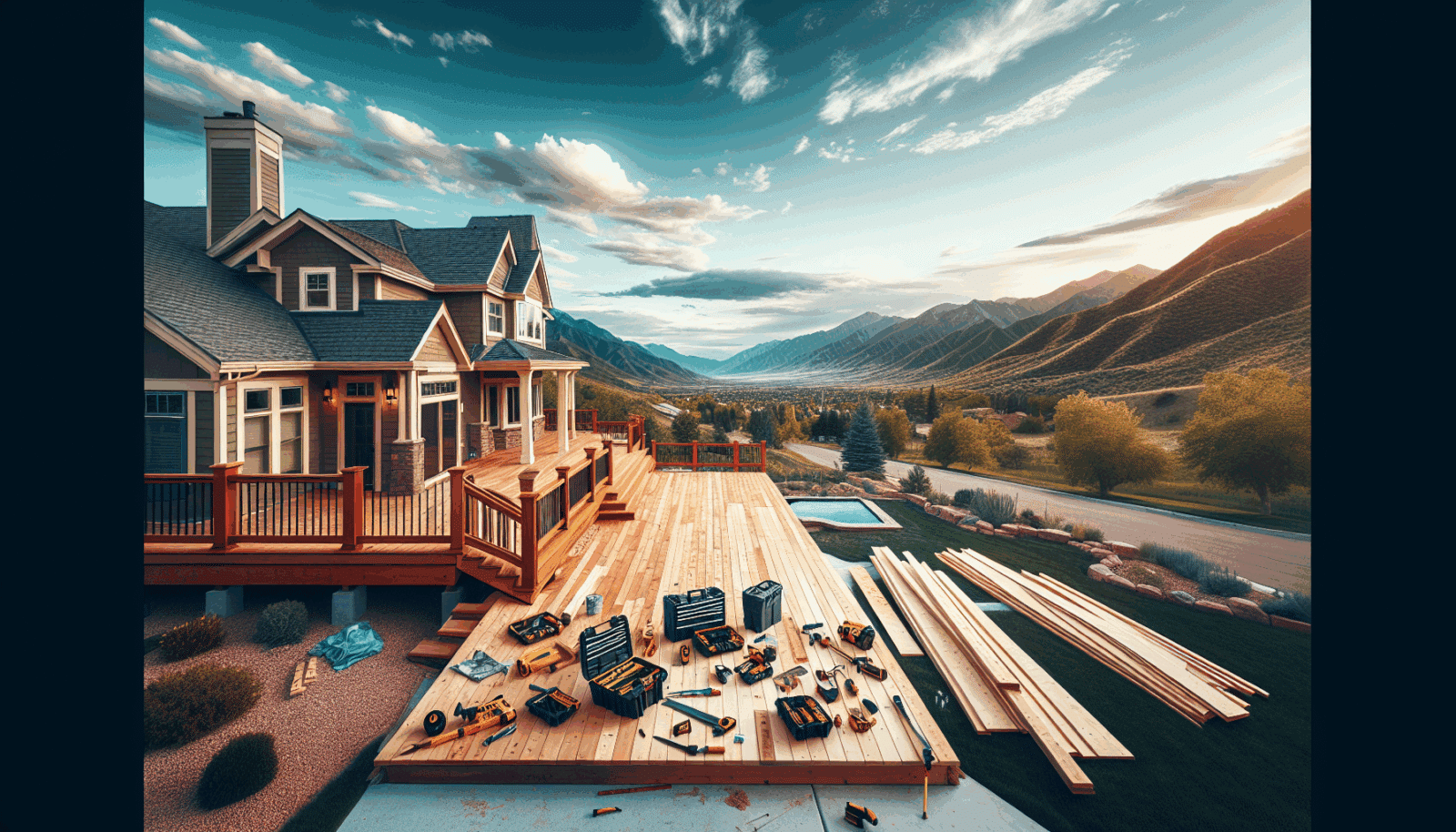If you’re a proud homeowner with dreams of creating the perfect outdoor retreat, the thought of DIY deck Installation may sound appealing yet daunting. But fear not, at Utah Deck Company, we’re here to empower you with the knowledge and steps needed to turn your vision into reality. We’ve noticed that homeowners often face challenges knowing where to begin and what to consider when building their decks. This article is designed to guide you through each stage of deck installation, ensuring a smooth, successful project for all residents who love to embrace the beauty of Utah’s great outdoors.
Contents
- 1 Planning Your Deck Design
- 2 Selecting the Right Materials
- 3 Understanding Local Permits and Codes
- 4 Measuring and Preparing the Site
- 5 Laying the Foundation
- 6 Framing Your Deck
- 7 Installing Deck Boards
- 8 Adding Railings and Stairs
- 9 Finishing Touches: Sealing and Decorating
- 10 Expert Tips for DIY Deck Installation
- 11 Conclusion
Planning Your Deck Design
The first step to any successful deck project is thoughtful planning. Begin by considering how you intend to use your deck. Are you looking to host lively summer barbecues or create a quiet space for morning coffees? Understanding the purpose will guide your design and size considerations.
Once you have a clear purpose, it’s time to sketch a basic design. Note any features you may want, such as built-in seating, planters, or even space for a hot tub. These elements will affect the deck’s layout and structural considerations. Remember to keep your home’s architecture in mind, ensuring your deck complements its style and enhances your home’s overall aesthetic.
Selecting the Right Materials
Choosing the right materials is crucial for longevity and aesthetics. In Utah, weather conditions can vary greatly, which means your deck materials need to withstand everything from blazing sun to snowfall. Popular choices include pressure-treated Wood, cedar, and Composite decking, each with pros and cons regarding cost, durability, and maintenance.
Pressure-treated wood is budget-friendly and widely available, but it requires regular maintenance. Cedar offers natural rot resistance with a more aesthetic appeal, while composite materials provide a low-maintenance, long-lasting alternative, though they come at a higher cost.
Understanding Local Permits and Codes
Before picking up a single tool, it’s essential to familiarize yourself with local building codes and permits. Different areas have unique regulations that govern construction projects, including decks. Adhering to these ensures safety and compliance while avoiding costly fines or having to dismantle your work.
We recommend visiting your local municipal office or checking online resources for specific permit requirements. Some regions offer guidelines and code requirements that can be incredibly helpful as you plan your deck’s structure and safety features.
Measuring and Preparing the Site
Accurate measurements are the backbone of a solid deck structure. Start by marking the dimensions of your proposed deck on the ground. A clear layout helps you visualize the space and ensures that your foundation will be square and stable.
Next, prepare the site by clearing away any vegetation and leveling the ground. This step is crucial to create a stable base that can support the weight of the deck and any additional furnishings or gatherings it will hold over time.
Laying the Foundation
The foundation is where the rubber meets the road or, rather, where your deck meets the earth. Most decks use concrete footings to provide a stable and sturdy base. To begin, you’ll need to dig holes, pour concrete, and place connectors for the support posts.
This can be physically demanding work, but it’s doable with the right tools and a bit of elbow grease. It’s crucial to allow the concrete to cure fully before moving on to the next steps, ensuring your deck has a stable foundation.
Framing Your Deck
Once your concrete footings are ready, it’s time to build the deck’s frame. Begin with the ledger board, which will attach directly to your home, providing a strong base for the rest of the structure. Use quality fasteners and waterproofing measures to prevent water damage.
The rest of the frame, constructed from beams and joists, should be meticulously measured and cut. This structure will support the deck boards and any additional features. Paying attention to detail in this step ensures a safe, level surface for you and your family to enjoy.
Installing Deck Boards
With the framework complete, it’s time to lay the deck boards. This step is where your deck truly begins to take shape and resemble your envisioned outdoor space. Start by securing the boards to the joists, often using nails or screws.
Spacing is key; proper spacing allows for expansion and contraction due to weather changes while preventing water pooling. Be sure to monitor for alignment frequently to maintain a professional look as you progress across the entire deck surface.
Adding Railings and Stairs
To complete your deck’s structure, you’ll need to install railings and stairs. Railings not only offer safety but also add an attractive finishing touch to your deck. When choosing railing materials, consider matching them to your deck boards or complementing them with a contrasting color.
Building stairs requires precision. They should be sturdy and comfortable to use, bearing in mind the height of the deck and local building codes. Stair calculations might seem complex, but careful attention will yield a safe and visually appealing access point.
Finishing Touches: Sealing and Decorating
After the hard work of constructing the main structure, it’s time to protect and personalize your new outdoor space. Applying a sealant or stain to wooden decks is crucial for protection against the elements, preserving the wood’s integrity and aesthetic.
Once sealed, you can add personal touches with outdoor furniture, potted plants, and decorative lighting. These elements will transform your deck into a true extension of your home, perfect for entertaining or relaxing in the Utah sunshine.
Expert Tips for DIY Deck Installation
- Plan Ahead: Take time to design a deck that suits both your style and practical needs. Consider future uses and possible expansions as part of your initial design.
- Invest in Quality Tools: High-quality tools can save you time and frustration. A good power saw, drill, and measuring tape will be invaluable.
- Prioritize Safety: Always wear protective gear and follow safety guidelines, especially when working at heights or with power tools.
- Consult the Pros When in Doubt: If you’re unsure about any part of the build, don’t hesitate to seek professional advice. A simple Consultation can prevent costly errors.
- Enjoy the Process: Building a deck is a big project, but it’s also a rewarding one. Take time to appreciate each stage and celebrate milestones as you progress.
Conclusion
At Utah Deck Company, we’re passionate about transforming your home improvement visions into reality. Whether you tackle the project yourself or seek professional help, remember you can always reach us by phone at 801-921-6826 or Request a Free Quote for any guidance along the way.





